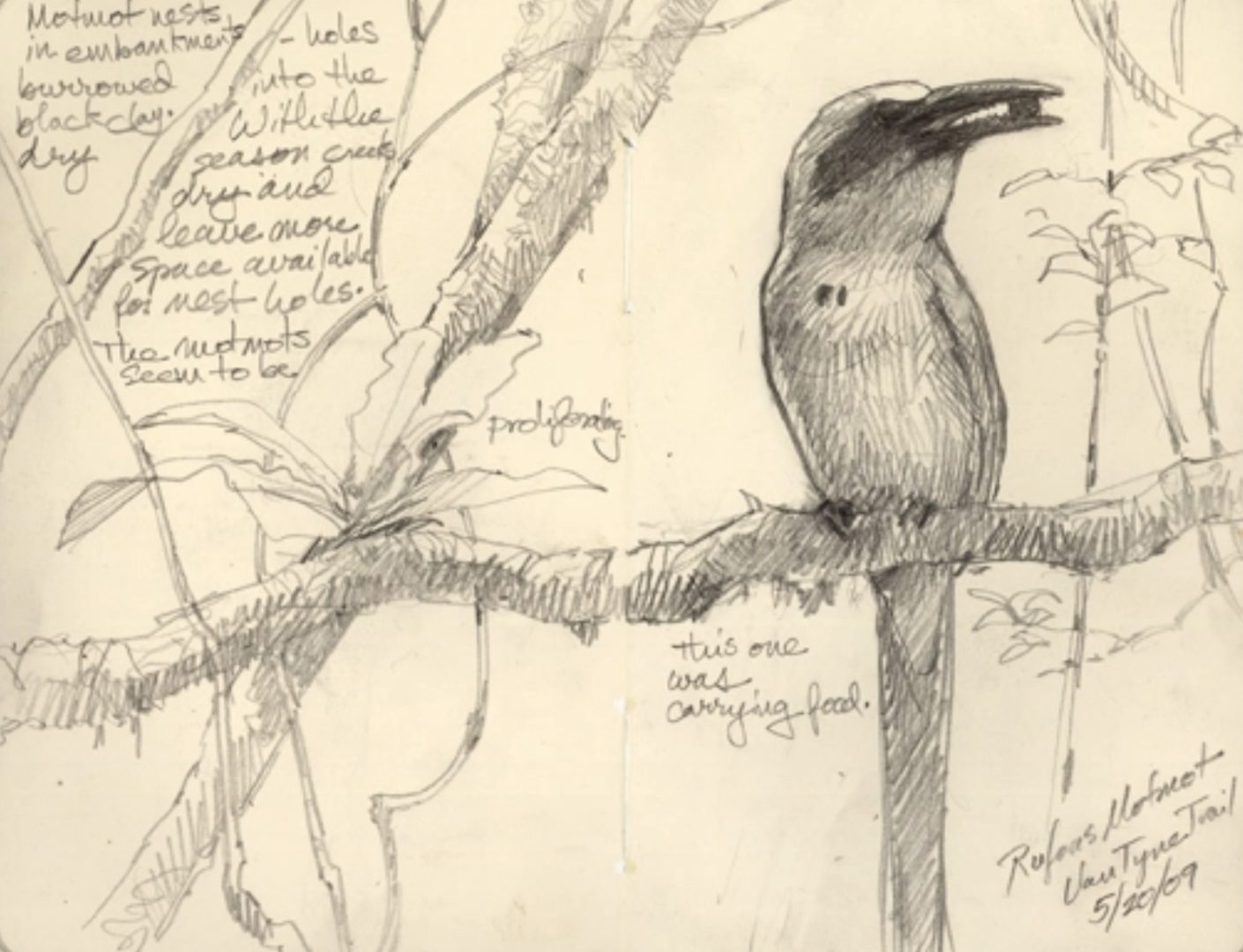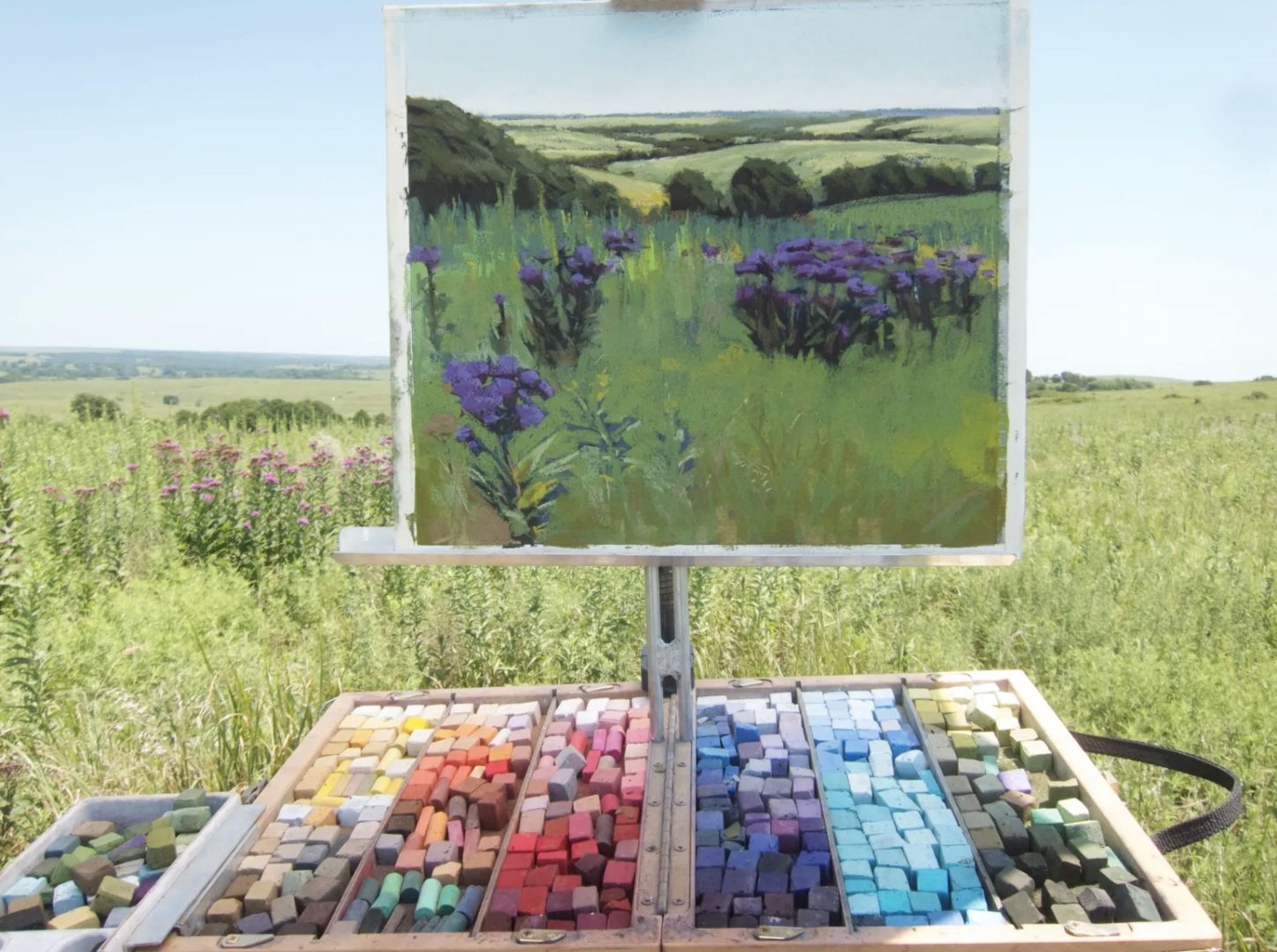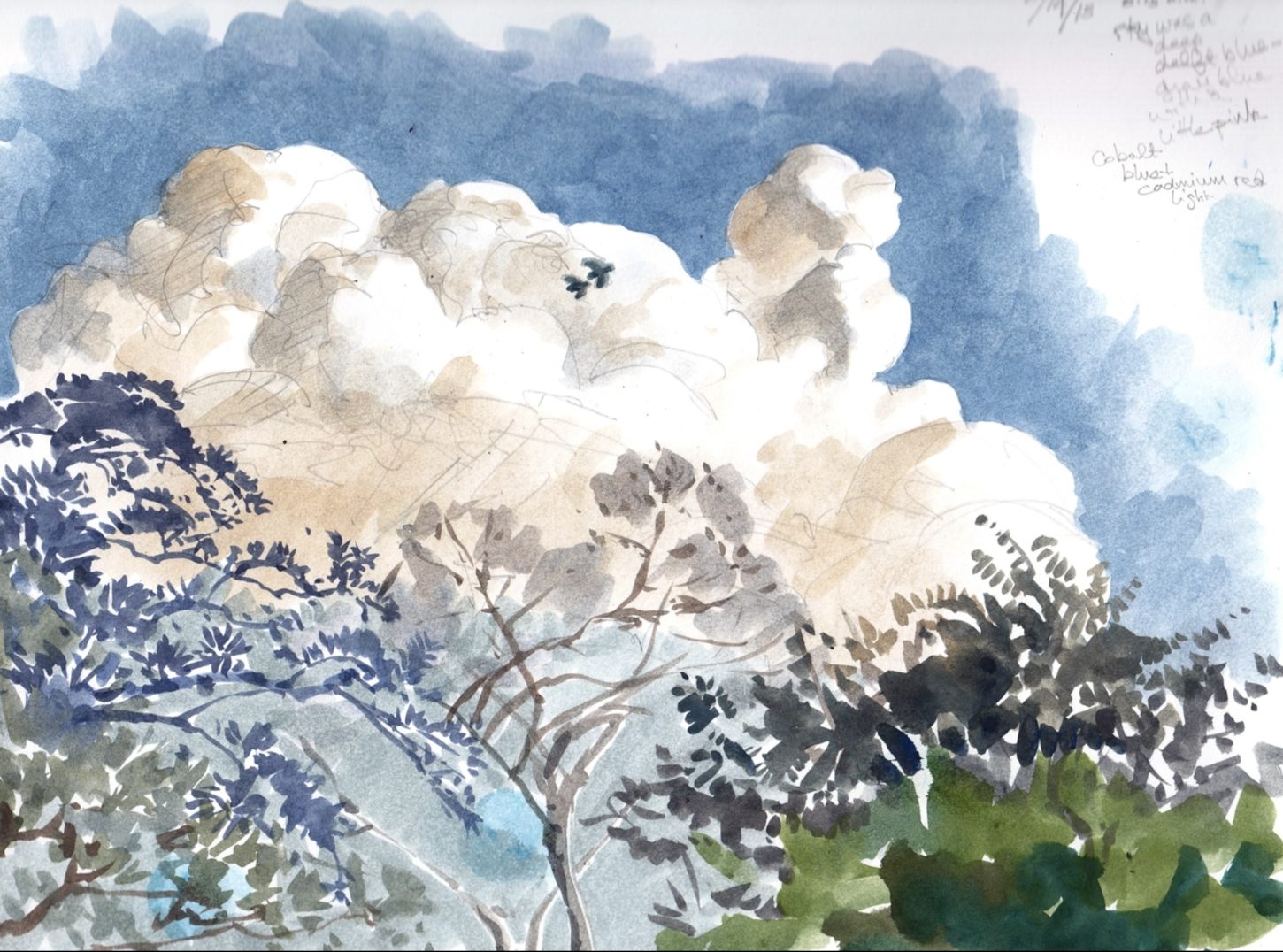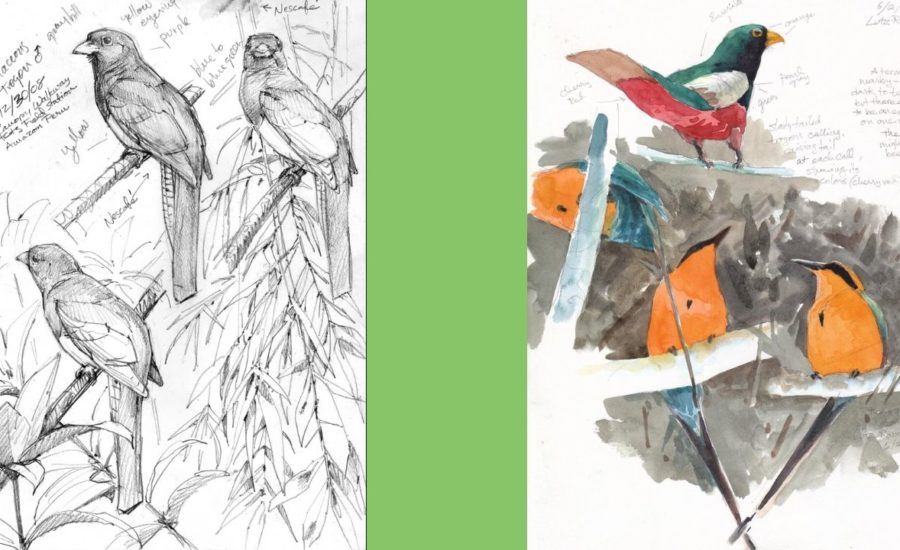What is the difference between nature sketching, field sketching, plein air drawing, and nature journaling? I talked to Debby Kaspari about some of these differences as well her favorite art supplies. Whether it is ink, to pencil, pastel, or watercolor, Debby is one of my favorite artists. It was exciting to talk to her!
Many years ago, when I was getting ready for a nature journaling trip to the neotropics, John Muir Laws recommended I check out this website with a cool name. It was called drawingthemotmot.com. I perused the drawings and sketches on the website and was impressed. The artist was clearly able to capture the feel of the tropical rainforest. Who was this Debby Kaspari person? Fast forward to 2022. I notice that Debby Kaspari’s name is on the schedule for the Wild Wonder Nature Journaling Conference.
Finally, I would have a chance to learn her techniques. I was a bit surprised she would be teaching pastel drawing. So far, I had only seen her ink, watercolor, and graphite work. Nevertheless, I was excited. (Avid fans will remember that I did a 30 day challenge for the month of the nature journaling conference. One of the prompts was to copy a teacher from the conference. You can see how I copied Debby here.) In conclusion, I was very excited when the chance came to talk to her.

Nature Sketching and Field Sketching
What’s the difference between them? Are they synonyms?
Nature sketching and field sketching are two art methods that have been used for centuries by scientists, artists, and naturalists to document the natural world. While nature sketching involves creating drawings or paintings of natural objects or scenes, such as plants, animals, and landscapes, field sketching is a specific type of nature sketching that involves creating quick, rough sketches of a subject or scene in its natural habitat. Both practices require careful observation and attention to detail and offer a unique and rewarding way to connect with the natural world.
To capture the essence of the subject, artists must carefully observe their subject, using a range of techniques such as shading, cross-hatching, and stippling to create texture and depth. Nature sketching can be done with a variety of materials, such as graphite pencils, charcoal, ink, or watercolors, depending on the artist’s preferences and the subject matter.
Field sketching, on the other hand, encourages a quick and spontaneous approach, allowing artists to experiment and be creative. Field sketching is often done outdoors, on location, where the artist can observe the subject firsthand and capture its unique characteristics and nuances. It is a valuable tool for naturalists, biologists, and other scientists who need to document and study the natural world. Field sketches can capture important details about a subject, such as its size, coloration, behavior, and habitat, that may be difficult to observe or record through other means.

What Art Mediums for Nature Sketching?
When it comes to nature sketching and field sketching, artists have several options for art mediums. Some popular mediums for field sketching include:
- Graphite pencils: These are a popular choice because they are lightweight and easy to carry. They also allow for a wide range of shading and can be used for both detailed and quick sketches. Debby sometimes combines white pastel highlights with graphite drawings.
- Pen and ink: Pens are great for capturing fine details, and ink is waterproof, making it ideal for use in the field. Pen and ink can be used for both quick sketches and more detailed drawings.
- Watercolors: Watercolors are great for capturing the colors and textures of nature. They can be used for both quick sketches and more detailed paintings. However, unless you use gouache then you cannot go over dark colors with light colors. (see pastel below).
- Gouache: This medium is often lumped in with watercolor. It is actually different. Gouache is opaque watercolor. That means you can add pale details on top of dark backgrounds. You can also work on toned paper.
- Colored pencils: Colored pencils are great for capturing the colors and textures of nature, but they are not as portable as graphite pencils. They are also slower to work with, making them better suited for more detailed drawings.
- Pastels: There are many types of pastels. In general they provide a painting like experience with a dry medium. They are good for blocking in large areas of color. Because they are opaque you can also touch up light details on top of dark.

But what if I’m completely new to nature journaling?
One of the great things is that you don’t need to be an expert at nature journaling to share it with kids. In fact, there are many benefits of teaching nature journaling while you yourself are a beginner. Nature journaling is focused on learning not knowing. The main enemy of learning is not ignorance but the illusion of knowledge. When you can model intellectual humility to kids it can be very motivating. However, it might take some practice. You have to get rid of the desire to know more than the kids. The best place to start is “I notice, I wonder, it reminds me of.”
Regardless of your experience, we got you right here. Below are links to some super resources for beginner nature journalers.
